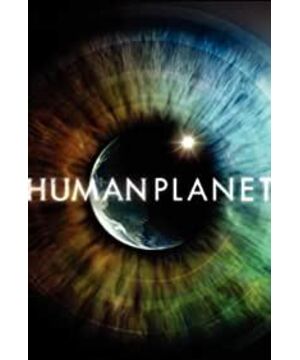While reading the second chapter of Guns, Germs, and Steel, I was very interested in Polynesians, and I looked all over the Internet, and it seemed that the first episode of Human Planet was about the human race living on the ocean. So came to watch.
Many of the stories in this documentary moved me very much, and it can be said that it was out of control. I want to write what I think about each episode.
Episode 1 Ocean
I am amazed at the beauty of the ocean in this episode, and I am a little fortunate that I downloaded the 6.5G version because I couldn't find the resources. The ocean is often not like the ocean, but like a desert storm.
Episode 2 Desert
Learn about several sub-Saharan countries through this episode.
Niger: Nigeria, with a similar name, is the fastest growing country in Africa and has a sizable population. Most of Niger is in the desert, and the situation is stable recently. The country wants to attract investment, but it is not very attractive to other countries. And the country has few resources. I don't know how I feel when I see the Tubu woman who is trying so hard to find the water source.
Mali: It is also a landlocked country in the Sahara Desert, but the southern part is better, so most of the population lives in the south.
I really like a movie called "God is Crazy", about the living fossil Bushmen. Bushmen think white beauties are ugly, because they are white like albinism, or like maggots, and the hair color is like a devil. I really like this detail. This episode, which is also about human life in the desert, also has several interesting points. First, several guns appeared in the Mali fishing festival, the purpose of which was to fire the gun to start the competition. The second part is the end credits, where the camera crew mistakenly dropped the hot air balloon near the town, causing many children to come to them (the camera crew seemed to be deeply regretful about this), and one of the children asked, "Did you bring me a present? "
third episode polar
I've always been fascinated by Inuit life, from igloos, dog sledding, and even dark cooking to seals and pickled seagulls. The Indians call the Inuit "Eskimos" (people who eat raw meat) contemptuously. From the perspective of the film, it does make sense... If there is no wood, where will the fire come from? Taking advantage of the falling tide, the water in the ice layer fades, and it is indeed quite graceful and thrilling to go under the ice layer to pick up seafood. The narwhal seems to be the prototype of the unicorn, and it is really unbearable for such a beautiful creation to be hunted by humans.
I have always wanted to try venison, but deer creatures are difficult to domesticate. If I want to eat it, I can only eat wild animals. Today, I think, not necessarily, I can eat reindeer. After all, it is the only large deer mammal domesticated by humans. In addition, the polar night has an unspeakable attraction to me. Thinking about it, it is still night when I wake up. No matter what I do, I pretend to be the same as usual, but it is really different. This quiet and dark environment will weaken the connection with others, which is really suitable for thinking.
Episode 4 The Jungle
In tropical rain forests, only a small amount of sunlight can reach the surface, so the surface vegetation is sparse, even barren than deserts. Many animals live in the treetops. Rainforest hunters inject the toxins of tree frogs into their bodies, believing that this can provide them with speed and strength buffs. They hunted the monkeys among the trees with blow darts. As for the ground, eat insects such as tarantulas.
Zhihu has long sighed for the story of risking their lives to gather honey in the rainforest for my family. After all, such a thing, I can buy it easily when I go to the supermarket. I don't quite agree with this view. This kind of feeling of cherishing the 996 life of modern urbanites belongs to the mainstream in the comment area of the documentary "Human Planet". In fact, it is superficial. We humans are a hunter-gatherer species, not for cities, and our ancestors were a group of happy hunters in their longest years, living only for the food and clothing of their kin, not for larger themes. We are the people alienated by civilization.
Episode 5 Mountains
The Kazakhs living in the Altai Mountains tame falcons to help them hunt in the wilderness.
Ethiopia is located on the Ethiopian Plateau, known as the "Roof of Africa".
Episode 6 Prairie
I met a Bushman who has a magical language again. It is said that these two hunters who hunted antelope, although they were still wearing tribal costumes, one was a leather shoe and the other was a pair of sandals. They are all quite fashionable styles in the Western world. is very funny. In fact, it is possible that they are just showing their hunting skills to the photography team, not necessarily making a living from it, like the tree house in Papua New Guinea, but the latter may be "restored" based on the research of a certain scholar , the locals themselves probably do not remember the history of the tree house.
Many of the technologies of hunter-gatherer tribes are intangible cultural heritage, and I think the igloo technology of the Inuit can be taken to outer space.
Episode 7 Rivers
Once there are Mongolians or Southeast Asians in this documentary, I can imagine that their difficult life is due to the enormous pressure to survive (they are the poor in their country), not anything of a "performance" nature, so why do I Would suspect that Africans' tricks are meant to make fun of photographers, like folk tourist villages across China? I really got it wrong.
It's really interesting that people living in the Brazilian rainforest use the dry season as a productive day and the rainy season as a barren day. Are there any documentaries about rainforests?
Episode 8 City
View more about Human Planet reviews









